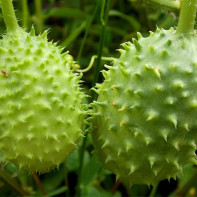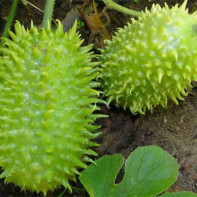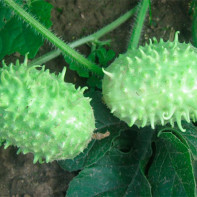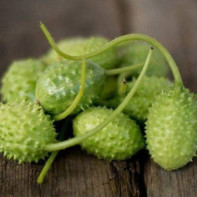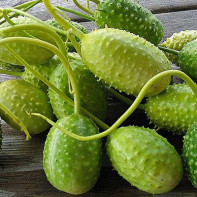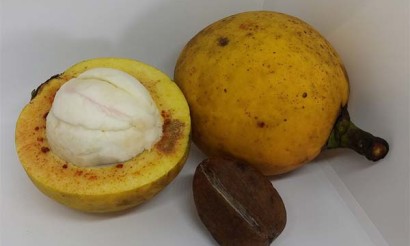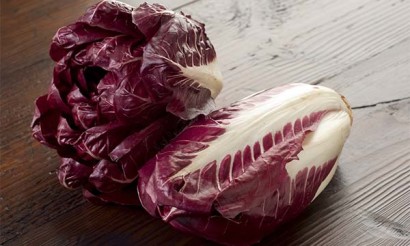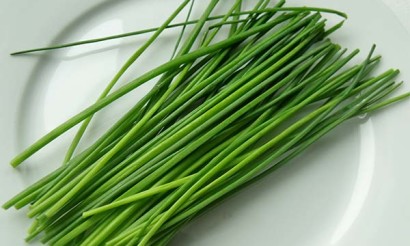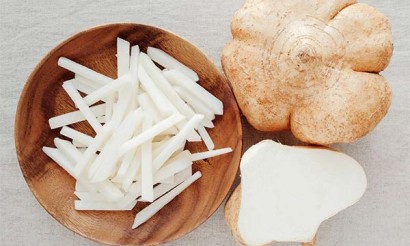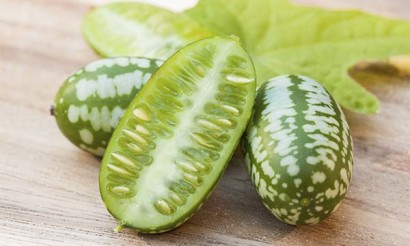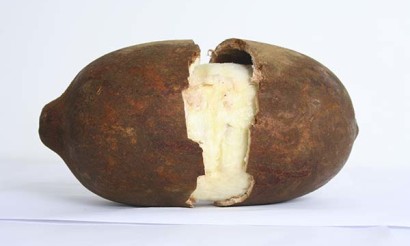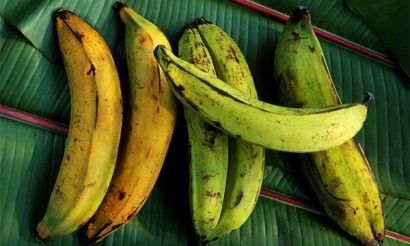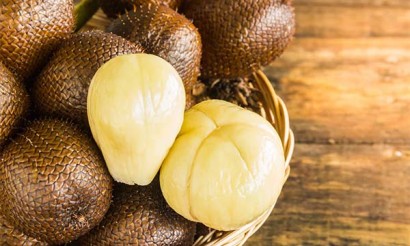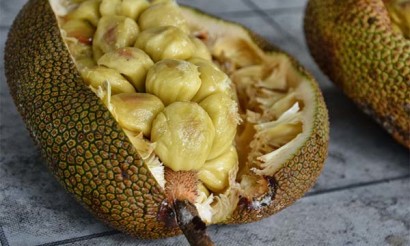Anguria: what kind of vegetable is it and why is it useful?
According to the traditions of domestic cooking, the residents of post-Soviet countries treat exotic vegetables with a degree of mistrust. For this reason, anguria or antilles cucumber is not popular in our country. Only gourmets who adore overseas delicacies, and this is the group of products to which dietitians refer this unusual fruit, willingly include it in their daily menu.
Fans of exoticism can be understood, because in fact "prickly hedgehogs", as aptly nicknamed in the people this type of cucumber for its external features, have a pleasant taste and a mass of useful properties. In addition, the culture does not require any special rules of care and perfectly takes root in the southern regions of the Eurasian space. In short, an unusual vegetable is quite worthy of attention and worthy of appreciation for its admirable qualities. Let's not waste time and let's get acquainted with the prickly vegetable crop.
What is this vegetable
It is a representative of vegetable crops, belongs to the family Pumpkin. It is true that the unusual vegetable in many ways confirms its kinship with the common cucumber. Therefore, in many names assigned to it by the peoples of different countries, this similarity is emphasized. Thus, the culture is known by such names as horned and watermelon cucumber.
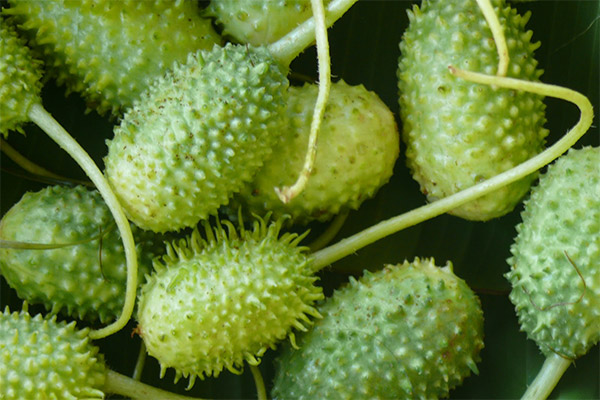
The vegetable is not rich in species diversity. In the Russian territory, mainly ornamental varieties are grown, and in food this product is used very rarely. In European cuisine, the antillean cucumber is used to prepare original salads and appetizers. This unusual natural gift is especially popular in America.
What it looks like
Antillean cucumber belongs to the annual varieties of vegetable crops. The plant twists like a vines and resembles an ordinary cucumber. Basic botanical characteristics of the anguria:
- The horned cucumber forms a climbing shrub that reaches 5-6 meters in height.
- The shaped and edge-carved leaves resemble the leaves of gourds. They are distinguished by the fact that their entire surface is covered with small thorns.
- During the flowering period, the bush is covered with yellow, fragrant flowers. Abundant flowering makes the plant attractive for use as a bright element of the decor. Anguria is grown specifically to create a hedge, and often the plant decorates even the facades of buildings. The flowering period lasts from early July to late fall.
- The elongated, thickly shaped fruits are also completely covered with prickly horns, hence one of its nicknames - hedgehogs. The Antillean cucumber is very prolific. From one bush in a season you can collect up to a hundred fruits if the culture is well cared for. On average, the weight of fruits does not exceed 50 grams.
- By the time of seed maturity, hedgehog cucumbers acquire a yellowish-orange color. In this form they are preserved for a long time. Some enterprising craftsmen use them to create original handicrafts and souvenirs.
Synopsis: Anguria is one of the fastest maturing vegetable crops. The biological maturity of the fruit is only 70 days after sprouting. But only the greens of anguria are good for food, and the overripe fruits look very beautiful against the backdrop of a hedge.
Where to grow
Favorable habitat for anguria is the tropics and subtropics. Wild species of the plant are more common. About the origin of this crop there are the most contradictory opinions: some believe that it appeared simultaneously on several continents, others convince that the cultivation of an unusual vegetable was engaged in the American Indians. Later on, the plant spread to different parts of the world, including the Russian Far East.
Today, it's hard to say whose side is telling the truth, but the Antilles cucumber's difference of opinion hasn't stopped it from doing well in Africa and Madagascar. Thanks to the efforts of breeders, varieties of the rare vegetable without bitterness have been obtained, which are now grown in the southern United States and Latin America. The plant is also found in Australia, but the American visitor is treated negatively there. Local farmers fight the weed relentlessly. The weed has become a serious problem in North American peanut fields. Russian gardeners are mainly engaged in the cultivation of ornamental species.
This is interesting: Antillean cucumber is often confused with kiwano. Although these two crops are close relatives, the kiwano or horned melon grows up to 300-400 g, and the taste of the fruit resembles a banana.
Species diversity
Gardeners with experience for the design of the homestead area try to plant varieties cultivated in other countries. The most popular of them:
- Gourmet. The lianas of this subspecies stretch upwards for 3 m. The young fruits are covered with a soft tuft, they are suitable for culinary purposes. Florists willingly use mature specimens to create original compositions.
- Syrian anguria is great for decorating rest areas. The large leaves and numerous shoots look great in open spaces, and the sweet fruits are suitable for decorating dishes. This variety bears fruit until frost.
- Diet Anguria. This is the only variety that was entered back in 2013 in the Russian State Register of cultivated plants. The small fruits reach removable maturity about 50 days after sprouting. The juicy pulp is used to prepare dietary dishes. One bush yields about 50 fruits a season.
Useful tip: When using anguria as a decorative element, the young shoot should be directed to the support, and when the plant will empty tendrils, the fresh greenery will envelop the arbor or climb on any artificial structure.
What is the usefulness of anguria
Antilles cucumber is ideal for dietary purposes by all accounts. The ripe fruit is 88% water and the remaining 12% is occupied by the following health benefits:
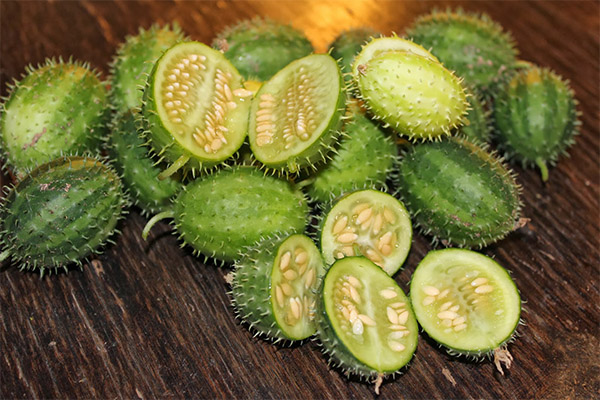
- Mineral elements. Exotic fruits contain a lot of iodine, an element necessary for normal thyroid function. Magnesium and potassium support cardiac function, and iron helps fight anemia. Selenium and zinc are involved in important biochemical processes, including they regulate the production of sex hormones.
- Vitamins. In the fruits of anguria there is a complete set of B vitamins, there is a high content of ascorbic and nicotinic acid. There is also tocopherol and vitamin D.
In addition to these two important groups of substances, the vegetable product also contains:
- fiber;
- ash;
- saccharides;
- organic acids;
- choline and some other components.
In addition to its rich composition full of minerals and vitamins, the American cucumber has a low caloric value. This figure is only 44 kcal.
Only the greens are of nutritional value. If they are included regularly in the diet as a useful component of the dietary diet, such a supplement will have the following positive effects on the body:
- normalize the course of metabolic processes;
- strengthen the immune system;
- Improve the function of the digestive organs;
- Cleanse the body of toxins and excess fluid;
- Due to the high content of fiber will improve intestinal peristalsis;
- Strengthen the structure of the walls of blood vessels;
- Will prevent the development of thrombosis.
In principle, Antilles cucumber is suitable for the diet of people of all ages. But especially the vegetable is popular with people with weight problems. It is enough to supplement the menu with this useful product, and the weight itself will gradually go away. As practice shows, without much effort and diets can be dropped in a week for 2-3 kg only due to the exotic cucumber.
Note: The composition of the unusual cucumber has good anti-inflammatory activity. Especially this effect is fully manifested in the treatment of skin problems.
What harm can it do
Antilles vegetable, like its counterpart, the usual cucumber, is considered one of the safest natural products. But since each person's body has its own peculiarities, there are a number of contraindications that should be considered when you want to include it in the basic set of products. It is not recommended to eat the vegetable:
- children and adolescents;
- pregnant and lactating women;
- Persons with individual intolerance to the product;
- patients with urolithiasis.
The ban also applies to home remedies for internal use.
Important: Even if there are no contraindications, it is always a good idea to consult a doctor. Anguria is an unfamiliar product for our table, so this precaution will help to avoid undesirable consequences.
How to Eat Anguria Properly
For dietary variety and as a dietary addition to the daily diet, young cucumbers, that is, greens are ideal. Their sugary and vitamin-rich juicy flesh has a pleasant taste. Fans of natural nutrition eat the fruit fresh, but they can be added to vegetable and fruit salads. The vegetable retains its nutritional properties perfectly in frozen form. Professional European cooks like to use it as a decorative element to add aesthetics to finished dishes.
What can be made from angouria
Only cultivated varieties of Antilles cucumber are suitable for culinary purposes. With good care, up to 200 juicy fruits per season can be harvested from a single liana. Some hobbyists eat the whole fruit without peeling the hairy rind.
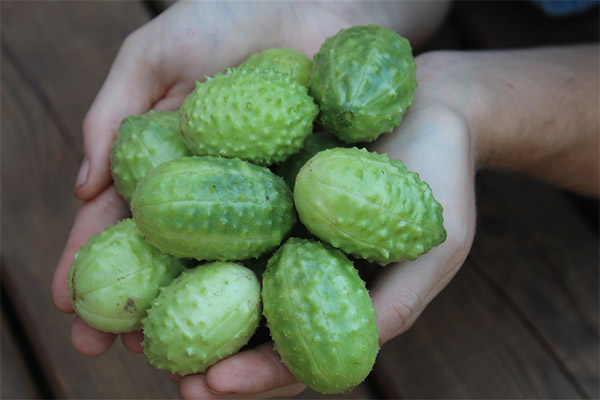
The prickly cucumbers are unusually tasty in pickled form. Any popular recipe that hostesses like to use for pickling regular cucumbers will do.
Other options for using the fruit:
- If the cucumber is cut in half, you get two decorative cups that can be filled with whipped cream and cookie slices.
- Thin circles of fruit are great for decorating cocktail glasses.
- Fruit desserts and ice cream can also be decorated with slices of the sweet and sour vegetable.
Brazilians roast and stew the greens. In principle, antillean cucumber meets all the culinary challenges that hostesses solve with ordinary cucumbers.
This is interesting: in some countries, bitter varieties of wild anguria are used as a natural pesticide in granaries.
Traditional Medicinal Uses
Of course, folk healers could not ignore such a gift of nature as the antilles cucumber. Its healing properties are actively used in Oriental medicine, recently and our herbalists began to apply simple recipes. Some ways of treating common diseases with prickly cucumber are given for practical use.
- To expel worms, dry the ripe seeds of the plant, crush them to a pulp, and then dilute in half with water. Take 1-2 tbsp. once on an empty stomach.
- When bruised, you can quickly prepare an ointment that will relieve the pain. To do this, extract the fresh juice from the young fruits, and then mix it with the same amount of olive oil. Rub the sore spots with the resulting composition. Store the prepared ointment in the refrigerator.
- Remedy for ringworm. Pour fresh leaves of anguria in vinegar and leave to infuse for a few days. Then rub the prepared mixture several times a day on the problem areas.
- Soothing remedy. Combine 15 drops of fresh juice with honey and take before bedtime. Such a simple remedy will help get rid of insomnia and calm the nerves.
- With hemorrhoids outside to relieve pain, you can apply halves of a fresh fruit to the nodes. Such a compress acts almost instantly.
It is worth noting that the juice of the antillean cucumber has universal properties: it helps to heal wounds and burns, it is taken internally with active tuberculosis.
Cosmetic applications
Another area of application of the unusual cucumber is home cosmetology. For the usual procedures of daily care, you can use the pulp of the vegetable or the juice.
These components are useful to add to the composition of rejuvenating masks.
- For example, you can make a simple composition of the pulp of anguria and banana. The resulting mass is applied to the face for a quarter of an hour, and then rinse with water. Such a procedure will refresh the skin and remove wrinkles.
- If you wipe your skin twice a day with a tampon soaked in fresh cucumber juice, you can get rid of freckles and age spots.
- Since the juice has anti-inflammatory properties, you can use it to solve the problem of acne.
How to Grow Anguria
Agronomy of anguria does not differ in special rules. The only thing worth considering when you want to decorate your homestead, and at the same time get a crop of useful fruits, is the heat-loving nature of this plant. Therefore, in our climatic conditions to create favorable conditions for the culture, it is best to grow it in a greenhouse until the appearance of sprouts. Then you can plant seedlings in fertilized soil. Although the plant is not too fastidious, but there are a number of requirements that should be met:
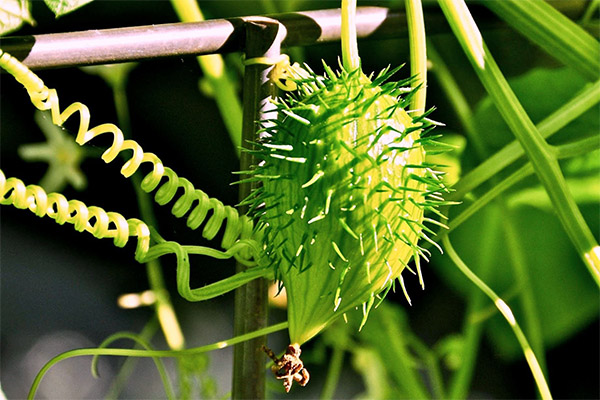
- Temperature regime - 21-28°C. The lower limit is +8°C, the upper limit is +32°C.
- The soil should be slightly alkaline, strongly moistened.
- The plant requires constant watering.
- Anguria should be planted in places unprotected from the sun, protected from the wind.
- The ideal place for the antillean cucumber is an elevated location where rainwater enters.
- Anguria grows and bears well in places where legumes, cabbage or greens grew before it.
It remains to be added that the crop is resistant to pests. Otherwise, it requires exactly the same care as cucumbers.
Interesting facts about the fruit
- According to some sources, the name of the culture is associated with the Antilles Islands. From there, birds carried the seeds to other parts of the world.
- After the colonization of America, the plant was completely displaced from the continent, and it was replaced by the common cucumber.
- In some countries, overripe red fruits are specially stored to decorate a Christmas tree with them later.
«Important: All information on this site is provided for informational purposes only. for informational purposes only. Please consult with your health care professional before using any of the recommendations. specialist before using any of the recommendations. Neither the editors nor the authors shall be liable for any possible harm caused by materials."

